1-DIMETHYLAMINO-2-PROPYNE
Synonym(s):N,N-Dimethyl-2-propynylamine;N,N-Dimethylpropargylamine;1-Dimethylamino-2-propyne
- CAS NO.:7223-38-3
- Empirical Formula: C5H9N
- Molecular Weight: 83.13
- MDL number: MFCD00008575
- EINECS: 230-620-9
- SAFETY DATA SHEET (SDS)
- Update Date: 2024-12-18 14:15:30

What is 1-DIMETHYLAMINO-2-PROPYNE?
Chemical properties
clear colorless to yellow liquid
The Uses of 1-DIMETHYLAMINO-2-PROPYNE
1-Dimethylamino-2-propyne is used in the synthesis of core shell systems based on noble metal nanoparticles coated by copolymers (polyacetylenes).
General Description
3-Dimethylamino-1-propyne is a precursor for synthesis of mixed cuprate reagents.
Biochem/physiol Actions
3-Dimethylamino-1-propyne inactivates mitochondrial monoamine oxidase from bovine liver.
Properties of 1-DIMETHYLAMINO-2-PROPYNE
| Melting point: | 18°C (estimate) |
| Boiling point: | 79-83 °C (lit.) |
| Density | 0.772 g/mL at 25 °C (lit.) |
| refractive index | n |
| Flash point: | 18 °F |
| storage temp. | 2-8°C |
| form | Liquid |
| pka | 7.45±0.28(Predicted) |
| Specific Gravity | 0.772 |
| color | Clear colorless to yellow |
| Water Solubility | Fully miscible in water. |
| BRN | 1071222 |
| CAS DataBase Reference | 7223-38-3(CAS DataBase Reference) |
| EPA Substance Registry System | 2-Propyn-1-amine, N,N-dimethyl- (7223-38-3) |
Safety information for 1-DIMETHYLAMINO-2-PROPYNE
| Signal word | Danger |
| Pictogram(s) |
 Flame Flammables GHS02  Corrosion Corrosives GHS05  Skull and Crossbones Acute Toxicity GHS06 |
| GHS Hazard Statements |
H225:Flammable liquids H302:Acute toxicity,oral H311:Acute toxicity,dermal H314:Skin corrosion/irritation |
| Precautionary Statement Codes |
P210:Keep away from heat/sparks/open flames/hot surfaces. — No smoking. P233:Keep container tightly closed. P280:Wear protective gloves/protective clothing/eye protection/face protection. P301+P312:IF SWALLOWED: call a POISON CENTER or doctor/physician IF you feel unwell. P303+P361+P353:IF ON SKIN (or hair): Remove/Take off Immediately all contaminated clothing. Rinse SKIN with water/shower. P305+P351+P338:IF IN EYES: Rinse cautiously with water for several minutes. Remove contact lenses, if present and easy to do. Continuerinsing. |
Computed Descriptors for 1-DIMETHYLAMINO-2-PROPYNE
| InChIKey | ILBIXZPOMJFOJP-UHFFFAOYSA-N |
1-DIMETHYLAMINO-2-PROPYNE manufacturer
Jaydev Chemicals Industries
1Y
Phone:+91-9820034025
Whatsapp: +91-9820034025
product: Dimethyl(prop-2-ynyl)amine 99%
New Products
(S)-3-Aminobutanenitrile hydrochloride 4-Methylphenylacetic acid N-Boc-D-alaninol N-BOC-D/L-ALANINOL Tert-butyl bis(2-chloroethyl)carbamate 3-Morpholino-1-(4-nitrophenyl)-5,6-dihydropyridin- 2(1H)-one Furan-2,5-Dicarboxylic Acid Tropic acid 1-Bromo-3,5-Di-Tert-Butylbenzene S-2-CHLORO PROPIONIC ACID ETHYL ISOCYANOACETATE 2-Bromo-1,3-Bis(Dimethylamino)Trimethinium Hexafluorophosphate 4-IODO BENZOIC ACID 3-NITRO-2-METHYL ANILINE 1-(2,4-DICHLOROPHENYL) ETHANAMINE (2-Hydroxyphenyl)acetonitrile 4-Bromopyrazole 2-(Cyanocyclohexyl)acetic acid 4-methoxy-3,5-dinitropyridine 1-(4-(aminomethyl)benzyl)urea hydrochloride 2-aminopropyl benzoate hydrochloride diethyl 2-(2-((tertbutoxycarbonyl)amino) ethyl)malonate tert-butyl 4- (ureidomethyl)benzylcarbamate Ethyl-2-chloro((4-methoxyphenyl)hydrazono)acetateRelated products of tetrahydrofuran

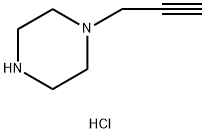
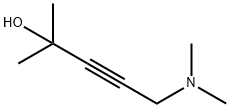

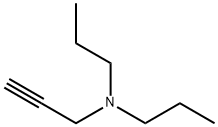

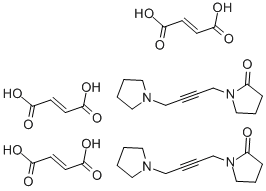
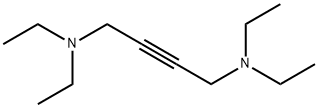
You may like
-
 Dimethyl(prop-2-ynyl)amine 99%View Details
Dimethyl(prop-2-ynyl)amine 99%View Details
7223-38-3 -
 Dimethyl(prop-2-ynyl)amine 99%View Details
Dimethyl(prop-2-ynyl)amine 99%View Details
7223-38-3 -
 1-Dimethylamino-2-propyne CAS 7223-38-3View Details
1-Dimethylamino-2-propyne CAS 7223-38-3View Details
7223-38-3 -
 N,N-Dimethylpropargylamine CAS 7223-38-3View Details
N,N-Dimethylpropargylamine CAS 7223-38-3View Details
7223-38-3 -
 3-Dimethylamino-1-propyne CAS 7223-38-3View Details
3-Dimethylamino-1-propyne CAS 7223-38-3View Details
7223-38-3 -
 1975-50-4 98%View Details
1975-50-4 98%View Details
1975-50-4 -
 14714-50-2 (2-Hydroxyphenyl)acetonitrile 98+View Details
14714-50-2 (2-Hydroxyphenyl)acetonitrile 98+View Details
14714-50-2 -
 118753-70-1 98+View Details
118753-70-1 98+View Details
118753-70-1
Statement: All products displayed on this website are only used for non medical purposes such as industrial applications or scientific research, and cannot be used for clinical diagnosis or treatment of humans or animals. They are not medicinal or edible.